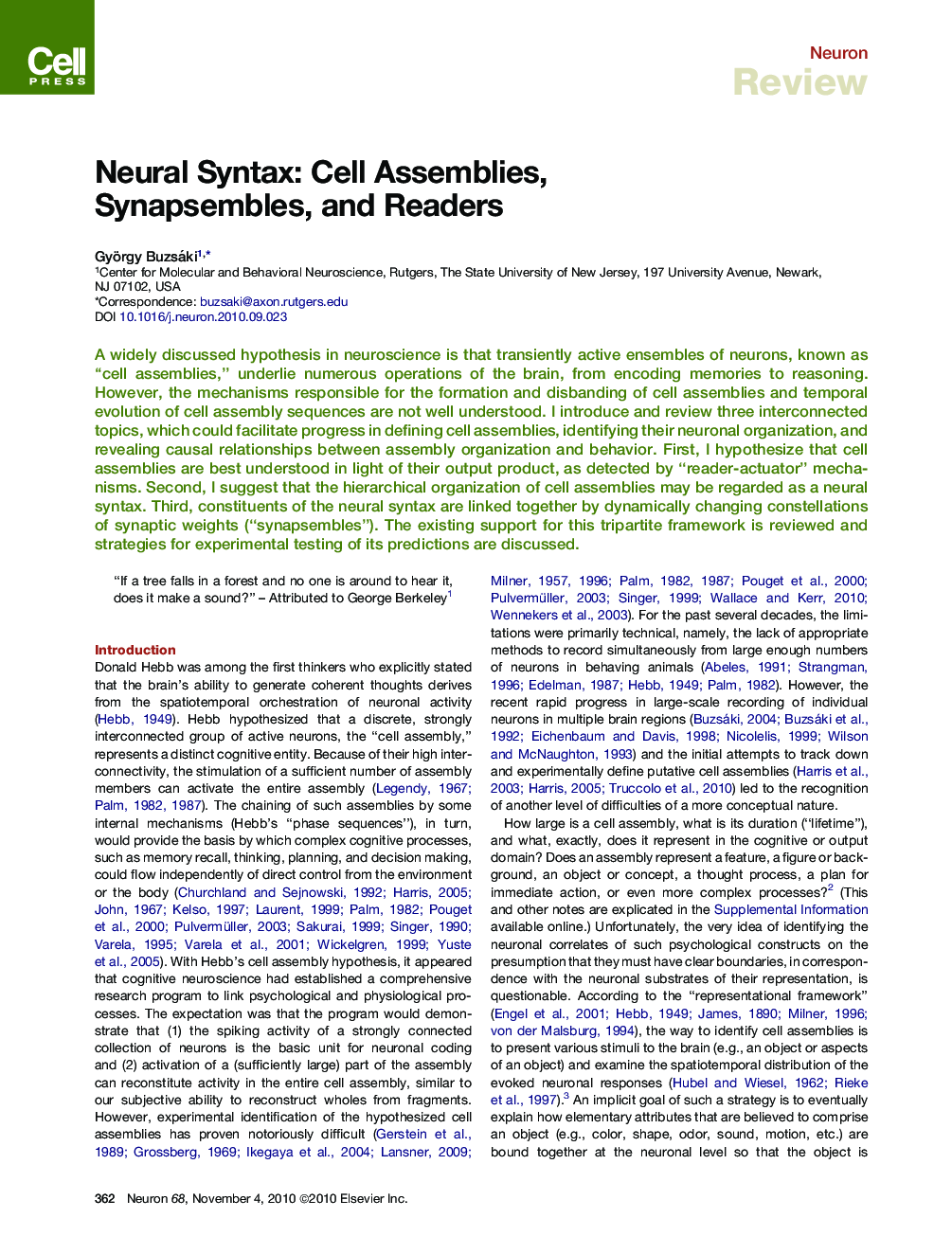| Article ID | Journal | Published Year | Pages | File Type |
|---|---|---|---|---|
| 4321563 | Neuron | 2010 | 24 Pages |
A widely discussed hypothesis in neuroscience is that transiently active ensembles of neurons, known as “cell assemblies,” underlie numerous operations of the brain, from encoding memories to reasoning. However, the mechanisms responsible for the formation and disbanding of cell assemblies and temporal evolution of cell assembly sequences are not well understood. I introduce and review three interconnected topics, which could facilitate progress in defining cell assemblies, identifying their neuronal organization, and revealing causal relationships between assembly organization and behavior. First, I hypothesize that cell assemblies are best understood in light of their output product, as detected by “reader-actuator” mechanisms. Second, I suggest that the hierarchical organization of cell assemblies may be regarded as a neural syntax. Third, constituents of the neural syntax are linked together by dynamically changing constellations of synaptic weights (“synapsembles”). The existing support for this tripartite framework is reviewed and strategies for experimental testing of its predictions are discussed.
